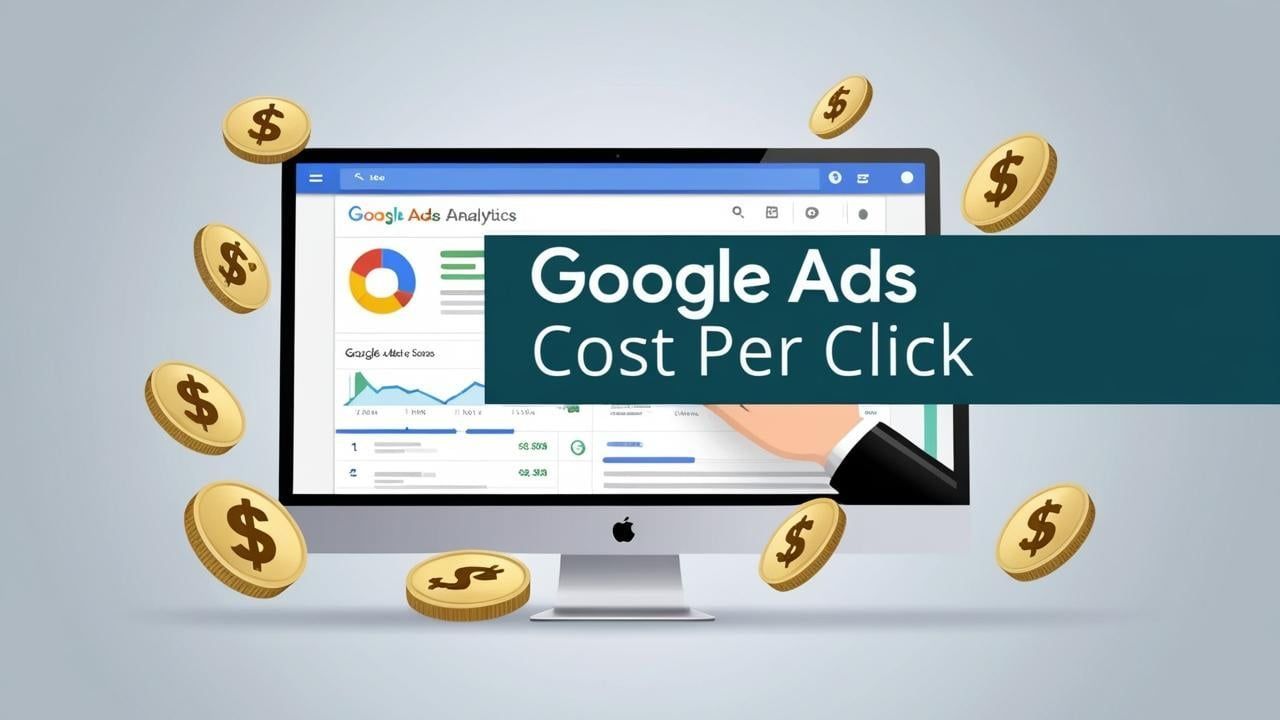Best SEO Practices: A Comprehensive Guide
Search Engine Optimisation (SEO) is a fundamental aspect of modern digital marketing. It is a key driver in enhancing online visibility and ensuring that your content reaches its intended audience. Whether you're a seasoned marketer or a novice, understanding the best SEO practices is crucial for long-term success. This comprehensive guide will provide you with the knowledge and tools needed to optimise your website effectively.
Table of Contents
Introduction to SEO
SEO is the process of improving the visibility and ranking of a website or web page in search engine results pages (SERPs). The primary aim is to increase organic (non-paid) traffic from search engines. As search engines evolve, so do the strategies to optimise content effectively. This guide will explore various types of SEO practices, offering insights and actionable tips to enhance your digital presence.
In the rapidly changing landscape of digital marketing, SEO remains a critical component. Companies such as Moz and HubSpot have continuously adapted their SEO strategies to align with the latest search engine algorithms and user behaviour patterns. An understanding of these changes not only helps in maintaining high rankings but also in capitalising on new opportunities for digital growth.
On-Page SEO
On-page SEO refers to the practice of optimising individual web pages to rank higher and earn more relevant traffic. It involves aligning content with search engine algorithms and user intent. Effective on-page SEO ensures that both search engines and users can easily understand the content and purpose of a webpage.
Keyword Research
Keyword research is the cornerstone of any successful SEO strategy. It involves identifying the words and phrases that potential customers use to search for products or services related to your business. This involves understanding how users phrase their queries and the intent behind them.
Tools for Keyword Research: Utilise tools like Google Keyword Planner, SEMrush, and Ahrefs to discover high-volume and low-competition keywords. These tools not only provide data on search volume and competition but also offer insights into search trends which can be invaluable for creating content that resonates with your audience. For instance, a company like Neil Patel Digital employs these tools to conduct comprehensive keyword analysis for their clients, leading to more targeted and effective content strategies.
Long-Tail Keywords: Focus on long-tail keywords, which are more specific phrases that often convert better due to their targeted nature. For example, a business selling bespoke furniture might target "handcrafted oak dining tables" rather than the broader "dining tables." This specificity helps attract users who are closer to making a purchasing decision, improving conversion rates.
Competitor Analysis: Analyse competitor websites to identify which keywords they rank highly for. Tools like SpyFu or SimilarWeb can provide insights into the keywords your competitors are targeting, allowing you to refine your strategy by identifying keyword gaps or opportunities. For example, a digital marketing agency may discover that competitors rank for a trending keyword, prompting them to create relevant content to capture similar traffic.
Meta Tags Optimisation
Meta tags, including title tags and meta descriptions, play a crucial role in on-page SEO. They are among the first elements search engines and users see, making their optimisation essential.
Title Tags: Ensure that each page has a unique title tag that includes the primary keyword and accurately reflects the page's content. A well-crafted title tag not only aids in search engine ranking but also improves click-through rates. For example, an e-commerce site like ASOS uses dynamic title tags that incorporate product names and categories to enhance discoverability and relevance.
Meta Descriptions: Write compelling meta descriptions that incorporate keywords naturally and encourage users to click on your link. A strong meta description provides a concise summary of the page's content, persuading users to visit your site. It's a practice effectively utilised by companies such as Etsy, where engaging and informative meta descriptions help draw traffic to individual product pages.
Best Practices: Keep title tags under 60 characters and meta descriptions under 155 characters to ensure they display properly in SERPs. This practice ensures that the essential information is visible to users, encouraging higher click-through rates. Leading digital platforms like WordPress provide plugins such as Yoast SEO that guide users in optimising their meta tags effectively.
Content Quality and Relevance
Creating high-quality, relevant content is essential for engaging users and improving search rankings. High-quality content not only attracts visitors but also encourages them to stay longer on your site, reducing bounce rates.
Originality: Ensure that your content is original and provides value to readers. Search engines like Google prioritise unique content that offers new insights or information. For instance, the BBC's website often features in-depth articles that not only report news but also provide expert analysis and commentary, thereby enhancing user engagement.
Readability: Use short paragraphs, bullet points, and subheadings to enhance readability. This approach not only caters to users who skim content but also improves accessibility. Websites like Medium excel in this practice, ensuring their articles are easy to read and visually appealing.
User Intent: Align content with the search intent behind the keywords to satisfy user queries effectively. Understanding whether a user is looking for information, seeking to make a purchase, or comparing options allows you to tailor content accordingly. Amazon, for instance, effectively uses customer reviews and detailed product descriptions to address various user intents on their product pages.
Content Freshness: Regularly update your content to ensure it remains current and relevant. Search engines favour content that is kept up-to-date, which can lead to higher rankings over time. Businesses like BuzzFeed frequently update their articles and listicles to maintain relevance and user interest.
Technical SEO
Technical SEO focuses on improving the infrastructure of a website to enhance its visibility and user experience. It ensures that a website meets the technical requirements of modern search engines, enabling them to crawl and index the site effectively.
Website Speed and Performance
Website speed is a critical factor in both user experience and SEO rankings. Slow load times can lead to high bounce rates and lower search rankings, as users tend to abandon sites that take too long to load.
Page Load Time: Aim for a page load time of under three seconds to reduce bounce rates. Studies by Google have shown that the probability of bounce increases by 32% as page load time goes from one to three seconds. Websites like Pinterest have implemented performance optimisation strategies that improved their page load speed, leading to increased user engagement and session times.
Optimisation Techniques: Compress images, use browser caching, and minimise JavaScript to improve load times. Companies like Yahoo have long advocated for these practices through their YSlow tool, which helps web developers analyse and optimise their websites for better performance.
Content Delivery Network (CDN): Utilise CDNs to distribute your content globally, reducing load times for users far from your server location. Businesses like Netflix use CDNs extensively to ensure their streaming services are fast and reliable worldwide, enhancing user satisfaction and retention.
Mobile Optimisation
With the increasing use of mobile devices, mobile optimisation is more important than ever. A mobile-optimised site ensures that users have a seamless experience, regardless of the device they use.
Responsive Design: Ensure your website is responsive and provides a seamless experience across all devices. A responsive design dynamically adjusts to different screen sizes and orientations. Shopify, for example, offers themes that are inherently responsive, ensuring that online stores look great on any device.
Mobile-Friendly Test: Use Google's Mobile-Friendly Test tool to evaluate and improve your site's mobile performance. This tool provides insights into issues affecting mobile usability, allowing you to make necessary adjustments. Businesses like Airbnb have leveraged such tools to enhance their mobile user experience, significantly boosting their mobile engagement metrics.
Accelerated Mobile Pages (AMP): Consider implementing AMP to improve mobile load times. AMP is an open-source HTML framework developed by Google that enables mobile-optimised content to load instantly. Publishers like The Guardian use AMP to ensure their articles load quickly on mobile devices, enhancing the reader experience.
Secure Sockets Layer (SSL)
SSL certificates are essential for securing data and improving SEO rankings. An SSL certificate encrypts data transferred between users and websites, ensuring privacy and data integrity.
HTTPS Protocol: Switch from HTTP to HTTPS to enhance security and gain a slight ranking boost. Google has made it clear that HTTPS is a ranking factor, albeit a minor one. Websites like Wikipedia have transitioned to HTTPS to ensure the security and trustworthiness of their content.
Trust and Security: An SSL certificate helps build trust with users, signalling that their data is secure. Online payment platforms like PayPal prominently display their HTTPS status to reassure users of their commitment to security, which is crucial for maintaining customer trust and confidence.
Implementation Tips: Ensure that all internal links and resources on your site use HTTPS, and conduct regular security audits to maintain a secure browsing environment. This practice is vital for e-commerce sites such as Amazon, where secure transactions are paramount.
Off-Page SEO
Off-page SEO involves activities outside your website that impact your search rankings. It encompasses all the actions taken to improve a site's authority and reputation on the web.
Link Building
Link building is the process of acquiring hyperlinks from other websites to your own. These links act as votes of confidence, signalling to search engines that your content is valuable and authoritative.
Quality Over Quantity: Focus on obtaining links from reputable, high-authority sites. A single link from a well-respected site can be more impactful than dozens from low-quality sites. The New York Times, for example, provides significant authority through backlinks due to its established reputation and trustworthiness.
Natural Links: Engage in content marketing, guest blogging, and PR to earn natural backlinks. Creating compelling, shareable content can naturally attract backlinks. Companies like Buffer have successfully used guest blogging to build their backlink profile, contributing to their overall SEO success.
Broken Link Building: Identify broken links on other websites and suggest your content as a replacement. This tactic involves reaching out to webmasters and offering your content as a substitute for dead links, which can be a mutually beneficial strategy. Digital marketing experts often utilise tools like Ahrefs to find broken links relevant to their niche.
Social Media Influence
Social media can indirectly influence SEO by driving traffic and increasing brand visibility. While social signals are not direct ranking factors, they contribute to a brand's online presence.
Engagement: Encourage social sharing and engagement to amplify content reach. Engaging content that is widely shared can lead to increased visibility and more traffic. Coca-Cola, for instance, uses social media campaigns to drive engagement and broaden their reach, indirectly supporting their SEO efforts.
Brand Awareness: Build a strong social media presence to enhance brand recognition and drive more traffic to your site. A well-recognised brand is more likely to be searched for directly, increasing organic traffic. Companies like Nike leverage social media to maintain a strong brand presence, ensuring they remain top-of-mind for consumers.
Social Listening Tools: Use tools like Hootsuite or Brandwatch to monitor brand mentions and engage in relevant conversations. This practice can help identify content opportunities and foster community engagement, contributing to a stronger brand presence online.
Local SEO
Local SEO targets users in a specific geographic area and is crucial for businesses with physical locations. It helps businesses promote their products and services to local customers at the exact time they’re looking for them.
Google My Business
Google My Business (GMB) is a free tool that enhances your local search visibility. It's a critical component of local SEO, allowing businesses to manage how they appear in Google search results and on Google Maps.
Profile Optimisation: Complete and optimise your GMB profile with accurate business information, including address, phone number, and operating hours. A well-optimised GMB profile can significantly increase visibility in local search results. A study by BrightLocal found that businesses with complete profiles were twice as likely to be considered reputable by users.
Customer Reviews: Encourage satisfied customers to leave positive reviews to boost credibility. Positive reviews can improve your local search rankings and attract new customers. Restaurants like The Ivy use customer reviews to enhance their local reputation and attract new patrons.
Regular Updates: Keep your GMB profile updated with new photos, posts, and business hours changes. Regular updates signal to both customers and search engines that your business is active and engaged, enhancing your local SEO efforts.
Local Citations
Local citations are online mentions of your business name, address, and phone number. Consistent citations across the web can improve your local search rankings.
Consistency: Ensure consistent information across all platforms, including directories and social media. Inconsistencies can confuse search engines and users, potentially harming local rankings. Local businesses like coffee shops and restaurants can benefit from consistent citations on platforms like Yelp and TripAdvisor.
Local Directories: List your business in relevant local directories to improve local search visibility. Being listed in reputable local directories can enhance your local SEO efforts. For example, law firms often list their services in legal directories to reach a more targeted audience.
NAP (Name, Address, Phone) Accuracy: Regularly audit your business information across all online platforms to maintain accuracy and consistency. This practice is crucial for businesses with multiple locations, ensuring each site is correctly represented in local searches.
Measuring SEO Success
Tracking and analysing your SEO efforts is crucial for understanding what works and what needs improvement. Measuring success helps in refining strategies and ensuring that efforts align with business goals.
Analytics Tools
Utilise analytics tools to monitor traffic, conversions, and user behaviour on your website. These tools provide valuable insights into how visitors interact with your site.
Google Analytics: Track website performance, including traffic sources, user demographics, and behaviour flow. Google Analytics offers comprehensive data that can help identify which strategies are effective and which areas need improvement. E-commerce platforms like Shopify use this data to optimise their sales funnels and improve user experience.
Google Search Console: Monitor search performance and identify issues affecting your site's visibility. Search Console provides data on search queries, click-through rates, and indexing status. Websites like The Guardian use this tool to ensure their articles are indexed properly and to troubleshoot any issues affecting visibility.
Heatmaps: Use tools like Hotjar or Crazy Egg to generate heatmaps that show where users click and scroll on your pages. This data can provide insights into user behaviour, helping you optimise page layouts and improve user engagement.
Key Performance Indicators (KPIs)
KPIs help measure the effectiveness of your SEO strategy. They provide a clear picture of whether your efforts are meeting your objectives.
Organic Traffic: Monitor changes in organic traffic to evaluate the impact of your SEO efforts. An increase in organic traffic often indicates successful SEO strategies. Businesses like TripAdvisor track organic traffic to assess the effectiveness of their content and SEO campaigns.
Conversion Rate: Track the conversion rate to understand how well your website turns visitors into customers. A high conversion rate suggests that your website effectively persuades visitors to take desired actions. Online retailers like ASOS focus on optimising product pages to improve conversion rates.
Bounce Rate: Analyse bounce rate to identify potential issues with user engagement. A high bounce rate can indicate that visitors are not finding what they are looking for or that there are usability issues. News websites like CNN monitor bounce rates to ensure that their articles are engaging and relevant.
Keyword Rankings: Regularly track your rankings for target keywords to assess visibility improvements over time. Consistent tracking can highlight trends and indicate areas that require additional focus or adjustment in strategy.
Future Trends in SEO
As search engines evolve, staying informed about future trends is essential for maintaining competitiveness. Anticipating changes allows for proactive strategy adjustments, ensuring that SEO efforts remain effective.
Voice Search Optimisation: With the rise of voice-activated devices, optimising for voice search is becoming increasingly important. Voice search queries tend to be longer and more conversational. Companies like Domino's Pizza have adapted by implementing voice search capabilities in their ordering process, making it easier for customers to place orders using smart speakers.
AI and Machine Learning: Search engines are leveraging AI to deliver more personalised search results. Google's RankBrain, for example, uses machine learning to better understand user queries and deliver relevant results. Companies that focus on creating content that addresses varied user intents are more likely to benefit from these advancements.
User Experience: As user experience becomes a more significant ranking factor, focus on providing a seamless, engaging experience across all platforms. Websites like Airbnb prioritise user experience by ensuring their platform is intuitive and easy to navigate, contributing to higher rankings and user satisfaction.
Video Content: The growing popularity of video content means that incorporating video into your SEO strategy can enhance engagement and visibility. Platforms like YouTube are essential for SEO, as they offer another avenue to reach audiences and boost rankings.
FAQs
What is SEO?
SEO, or Search Engine Optimisation, is the practice of enhancing a website's visibility in search engine results to increase organic traffic.
Why is keyword research important?
Keyword research helps identify the terms and phrases your target audience uses, allowing you to create relevant content that meets their needs.
How does mobile optimisation affect SEO?
Mobile optimisation ensures a website performs well on mobile devices, which is crucial as search engines prioritise mobile-friendly sites in rankings.
What are backlinks, and why are they important?
Backlinks are links from other websites to yours. They signal to search engines that your content is valuable and authoritative, boosting your rankings.
How can I track my SEO performance?
Use tools like Google Analytics and Google Search Console to monitor traffic, user behaviour, and search performance.
Conclusion
Implementing the best SEO practices is essential for improving your website's visibility and attracting more organic traffic. By focusing on on-page, technical, and off-page SEO, as well as local optimisation, you can create a comprehensive strategy that meets both user and search engine expectations. Remember to stay informed about future trends and continuously measure your SEO efforts to ensure sustained success. For more detailed information and assistance, consider exploring the services offered by professional marketing consultants who can guide.










